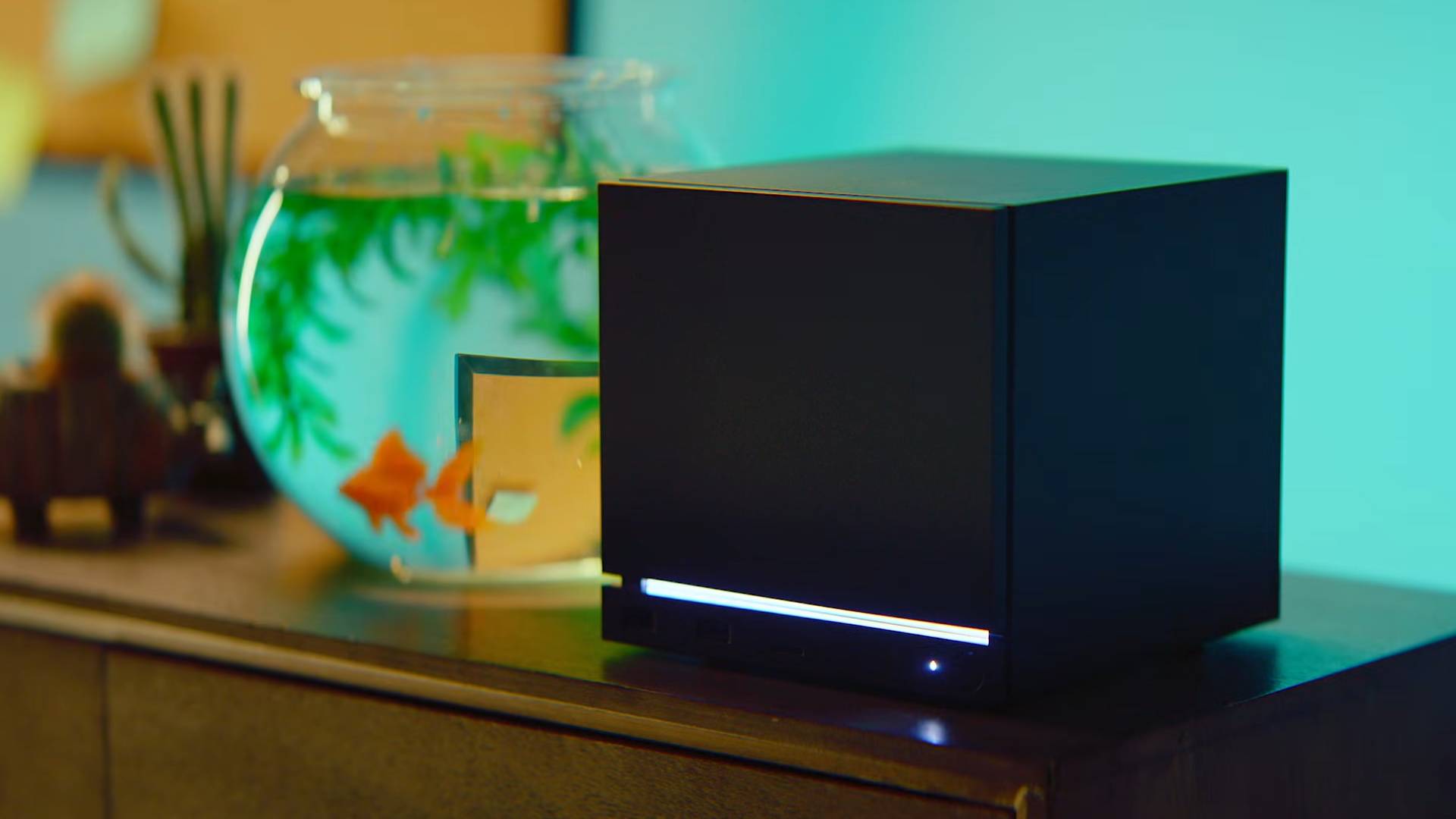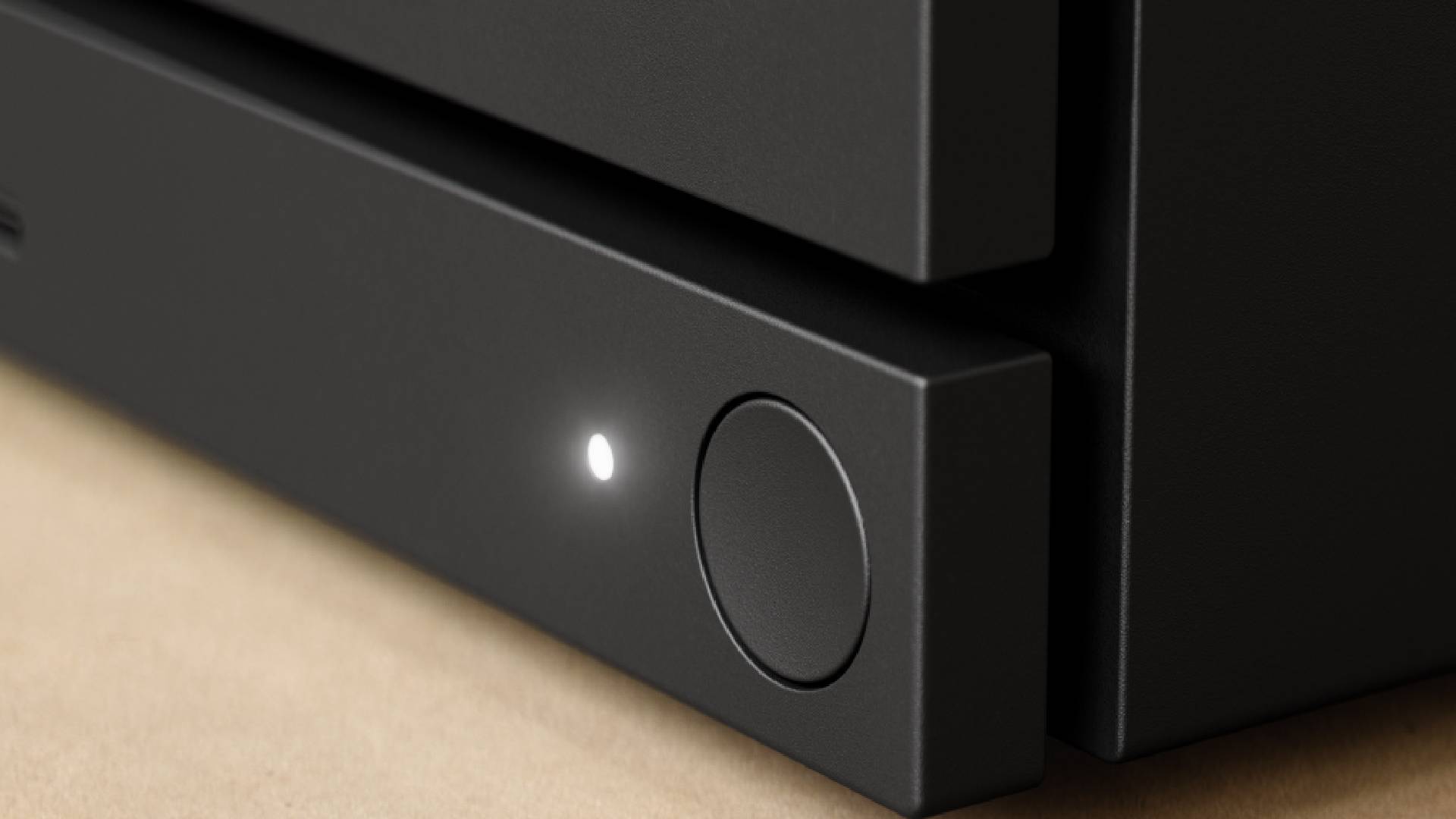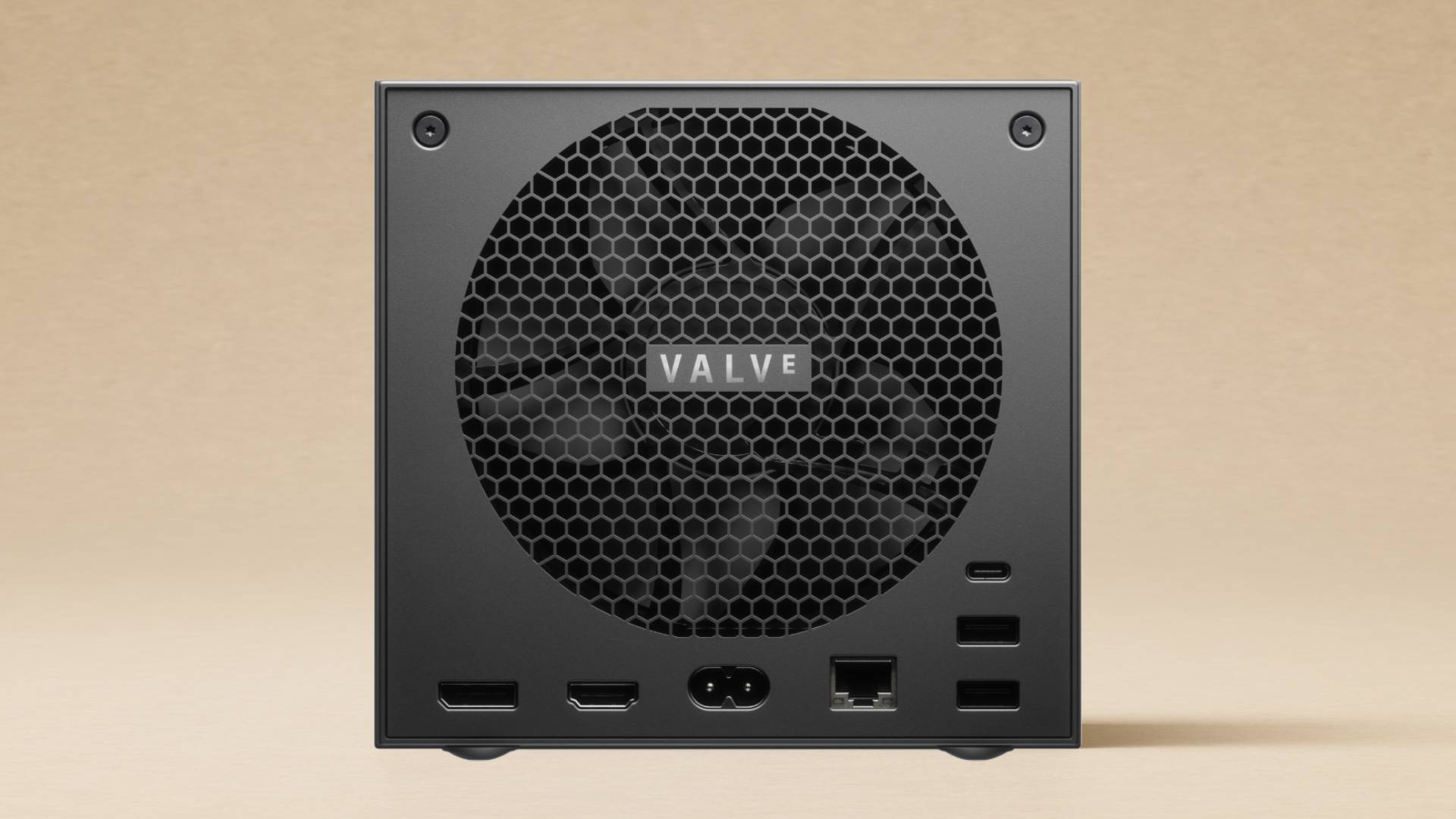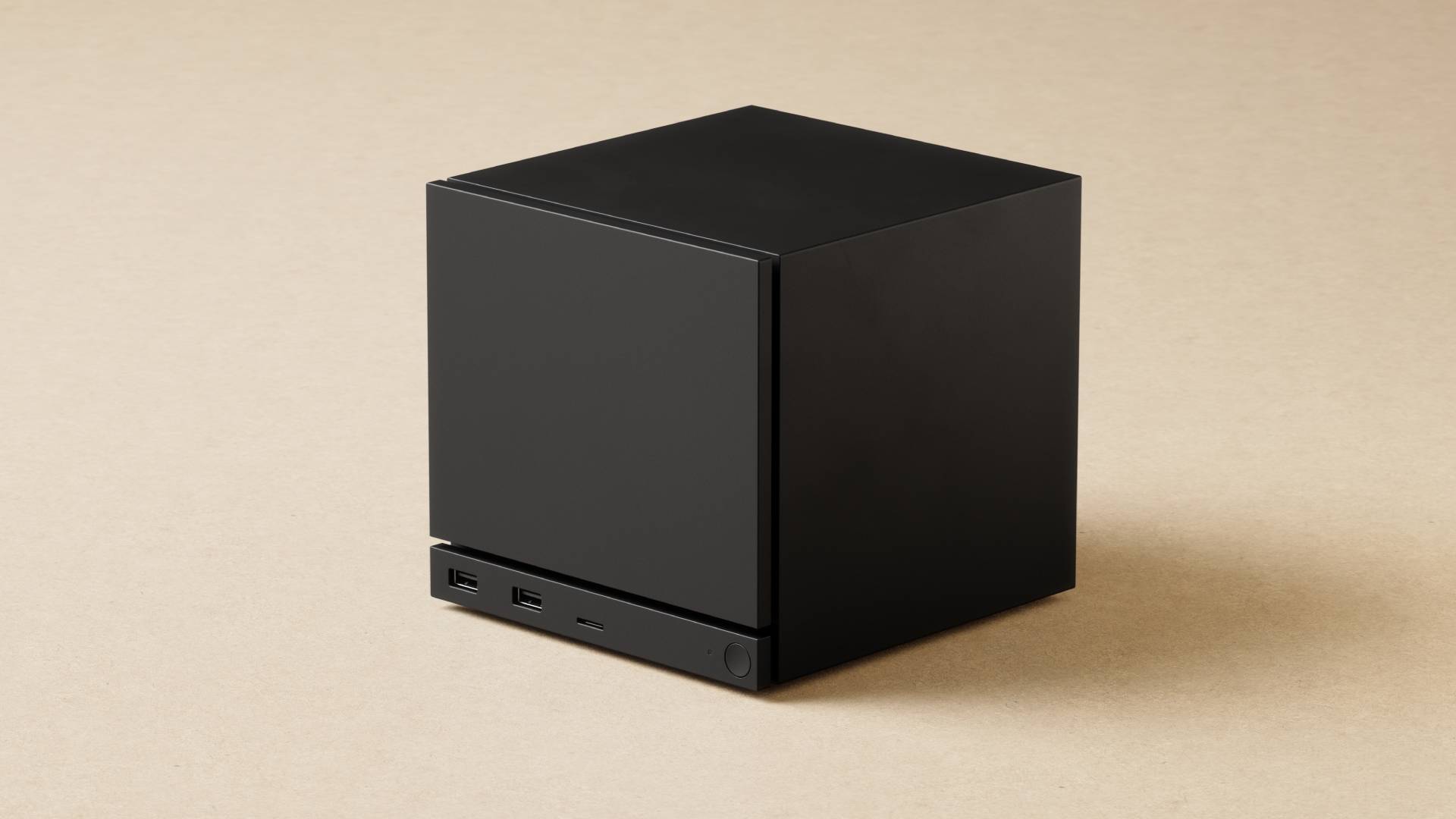Ten years later, the Steam Machine is officially back, and it might steal your console's lunch money

Valve just officially announced a new Steam Machine, and unlike its PC predecessors from ten years ago, this box takes cues from the Steam Deck. That's hardly surprising given that the latter is one of the best gaming handheld options around, but the new rig is far more than a screenless portable.
At its core, Valve's new Steam Machine is basically a mini PC. It's armed with an AMD 6-core Zen 4 CPU paired with a "semi-custom" RDNA 3 GPU with 28 Compute Units and 8GB GDDR6 VRAM. It also squeezes 16GB DDR5 RAM and up to 2TB storage into something that effectively looks like half an Xbox Series X (or an oversized Gamecube, depending on how your brain works).
Speaking of the GameCube, the Steam Machine actually arguably draws some customization influence there. Ninty's console had swappable jewels on the lid, but the new hardware trailer reveals customizable face plates that can add different designs to the front. The RGB strip at the front is customizable, too (of course it is).
Those specs, at least according to Valve, mean that the Steam Machine "supports 4K gaming at 60fps with FSR enabled." In other words, if you leverage AMD's AI upscaling suite, you can theoretically hit the same level of performance as a PS5, all while enjoying the company's storefront versatility and console navigation via SteamOS.
Specs | Steam Machine (2026) |
|---|---|
CPU | AMD 6-core Zen 4 |
GPU | "Semi-custom" RDNA 3, 8GB GDDR6 VRAM |
RAM | 16GB |
Storage | Up to 2TB |
Connectivity | Ethernet 1 Gbps, USB-C 10 Gbps, 3.2 Gen 2, 4x Type USB-A ports, 2x2 Wi Fi 6E, dedicated BT antenna, Integrated Steam Controller 2.4GHz radio |
Wattage | 30W TDP |
Operating system | SteamOS |
This announcement is sure to make the big dogs (namely, Sony and Microsoft) in the scene sweat since the box feels more like a living room system than a desktop gaming PC. On paper, the Steam Machine is a threat to the world of conventional consoles, as it's actually just a small PC; it's compatible with all the same controllers, peripherals, and accessories as a traditional desktop system, meaning it's anything but proprietary.
The difference this time around, compared to the original concept unveiled ten years ago, though, is that Valve is fully embracing console comforts. Just like an Xbox or PS5, you're getting perks like the ability to wake the system with a brand new Steam controller, fast suspend/resume, cloud saves, and "all the other Steam features you'd expect."
Software really is key here, and Valve's operating system is why many players are using handhelds like the Steam Deck OLED as a console alternative. Technically speaking, you've already got a pretty similar setup to hand if you've got the portable hooked up to a Steam Deck dock, but the Machine will feel even more living room-friendly thanks to its specific featureset.
Weekly digests, tales from the communities you love, and more



While the Steam Machine's innards do feel a bit like a souped-up handheld, they are obviously closer in nature to a console. There's a sizable gap between the Zen 4 CPU within this box and the Ryzen Z2 Extreme within the ROG Xbox Ally X, for example, with Valve's new system boasting 28 CUs versus 16. Microsoft's portable PC is using a newer RDNA 3.5 architecture, however, and the CPU side of things is Zen 5 rather than Zen 4.
Cooling is usually what catches devices that use an APU out, and Valve is naturally aware of this thanks to its handheld. Around the back of the new Steam Machine is a large fan that occupies most of the rear panel, providing some confidence in terms of heat dissipation. The AMD chipset within will be running at 30W, and while that is lower than some tiny tigs, like the Ayaneo Mini PC AM02, I've tested, its size still comes with a risk of fan noise.

The catch with the Steam Machine's whole format this time around is that it won't be upgradable like a conventional PC. There's room to argue that this system isn't for players who like to keep on top of upgrades and pick up the best graphics cards where possible, though, even if SteamOS' desktop mode means it can still be a mouse and keyboard rig if you need it to be.
I'll obviously need to get my hands on a Steam Machine for testing to find out how those specs actually translate performance-wise. Valve does claim that the PC is "over 6x more powerful than the Steam Deck," but I'm itching to see how it fares against the AMD RDNA 2 GPU within something like the PS5.
Of course, Valve isn't just about to step back into the small-form-factor PC console alternative ring; it's also about to reassert its challenge to the best VR headset throne with the "Steam Frame" (aka Valve Deckard), and as I've already spoiled, the Steam Controller is also back with the same touchpads as Valve's handheld.

Valve is clearly upping the heat when it comes to hardware, and the Steam Machine serves as the centrepiece to its new range. It's a move that comes as Microsoft is putting more focus on the service side of things with Xbox Game Pass while increasing its MSRPs across the board. I can't help but feel like the storefront giant is actually moving to fill a gap in the console market caused by various circumstances, and the reemergence of its living room hardware could be a landmark moment.
Pricing and an exact release date is still to be confirmed, but you'll be the first to know when we do!
Already got Valve's handheld? Swing by the best Steam Deck accessories and best Steam Deck docks for some setup inspiration.

Phil is the Hardware Editor at GamesRadar and joined the team in 2023. In the past, they've also contributed to the likes of TechRadar, The Daily Star, the BBC, and PCGamesN, but these days, they specialize in testing the latest gaming handhelds, monitors, TVs, and PC components. They're also extremely nerdy about retro consoles and playing the classics on both new and old systems.
You must confirm your public display name before commenting
Please logout and then login again, you will then be prompted to enter your display name.



